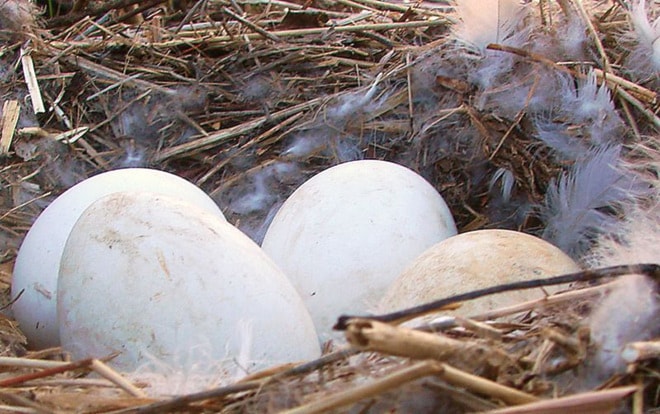In a continued effort to control the Canada Goose population in the Okanagan Valley, the Okanagan Valley Goose Management Program has just begun its annual egg addling program.
This program is in its 10th year and continues to prevent the population increase of non-migratory resident Canada geese. The nesting population, approximately 2,500 birds, remains in the valley throughout the year. Trained contractors have already been searching for pairs and nesting sites and hope to complete the addling program by mid-May.
“Most communities along the valley struggle with management of non-migratory Canada Geese,” said Kate Hagmeier, Okanagan Valley goose management program coordinator. “What many people fail to understand, and a large part of the message that we want to provide, is that the geese we are targeting are not native to the area.
"These geese are largely descendants of geese that were translocated here as part of an introduction program in the 1960s and ‘70s. Young geese and eggs were brought here from different areas in Canada to encourage the creation of an Okanagan goose population.”
What was not foreseen was the inability of these geese to migrate because they had no parents or natural triggers to guide them, along with their ability to adapt and thrive in the mild Okanagan climate. The consequences have been a successfully growing population with few natural controls.
The egg addling program involves shaking eggs or coating them with non-toxic biodegradable food-grade corn oil within 14 days of incubation to make them non-viable. The U.S. Humane Society supports this egg addling technique.
Once addled, eggs are returned to the nest. Geese continue to incubate until they realize the eggs will not hatch. At this point, it is generally too late in the year to produce more eggs. Adults are not harmed and will continue their regular life cycle.
Key to the success of the program is finding new nests. The public is asked to report lone geese, pairs of geese, or nest locations on private or public land by emailing coordinator@okanagangooseplan.com or calling 1-877-943-3209.
The public is asked to keep away from goose nests and to avoid touching the eggs. A special permit is required from the federal government that allows crews to addle goose eggs on public land and private lands with the owners’ permission. In the case of private lands, an authorization form is available on the program website.
In addition to egg addling and population surveys, grants from the Western Canada Turfgrass Association in 2012 and 2014 contributed to a leg-banding program. Bird-banding is the practice of applying unique markers (bands) to the legs of birds. When a marked bird is observed by a birdwatcher or recovered by a hunter, data on age, survival, habitat use and migratory patterns can be retrieved and analyzed.
“The data collected during the leg-banding program allows us to further improve our understanding of how the population is formed and where to target management strategies,” said Hagmeier.
The Okanagan Valley Goose Management Program is a partnership between the City of Kelowna, Central Okanagan Regional District, Regional District of Okanagan Similkameen, District of West Kelowna, City of Vernon, City of Penticton, District of Lake Country, Town of Osoyoos, Town of Oliver, District of Peachland, District of Summerland, Westbank First Nation, Glenmore Ellison Irrigation District and Western Canada Turfgrass Association
Information about the program is available at okanagangooseplan.com.
